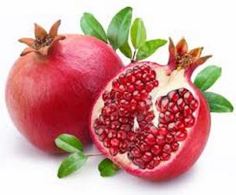 He made pomegranates in two rows encircling each network to decorate the capitals top of the pillars. He did the same for each capital. 1 Kings 7:18 The pomegranate (Punica granatum) is a small, bushy tree that grows about twenty feet high. Originally native to Iran, it travelled along some of the same trade routes that would later be associated with the silk trade, and spread across much of the ancient world. One of the seven species of agricultural products associated with the Land of Israel, the fruit is a symbol of righteousness, because it is said to have 613 seeds representing the 613 commandments of the Torah. (The actual number of seeds varies, of course, with each fruit.) Pomegranates, in Hebrew rimonim, adorned the tops of the pillars in Solomon’s temple, and ornamented the robes of kings and priests. The fruits represent fecundity and, indeed, life itself; with their abundance of seeds and intensely red juice, they are messy, fragrant, sweet, and tart. The pomegranate in the Biblical Garden is a dwarf variety that blossoms and grows lovely miniature fruits. Not winter-hardy in New England, it’s grown in a container and brought indoors after Sukkot. Pomegranates are traditionally eaten on Rosh Hashanah by Jews all over the world as a symbol of abundant goodness and in the hope that the Eternal One will grant us health and happiness in the coming year. Before the fruit is eaten, this blessing may be said, “May it be Your will, Lord our God and God of our forebears, that our merits increase like the seeds of a pomegranate.” 9/6/2021 08:12:13 am
shalom michael, Comments are closed.
|
AuthorsMichael Schlesinger is Temple Sinai’s Biblical Gardener. Mike has been gardening since he was eight years old. He used to grow grape vines and make wine when he lived in California. He now tends to our garden, continuing the traditions started by Catherine Walters. Archives
March 2020
|

Affiliated with the Union for Reform Judaism
30 Hagen Avenue • Cranston, RI 02920 • 401-942-8350 Office: dottie@templesinairi.org Rabbi Jeffrey Goldwasser: [email protected] |
Want to sign up for the weekly Sinai Scroll email?
Click here to receive weekly updates on Temple services, events and a message from the Rabbi. |


